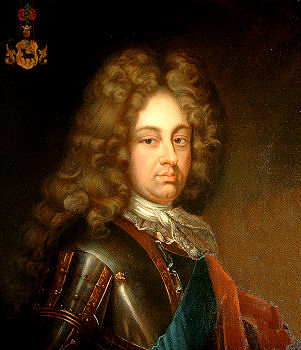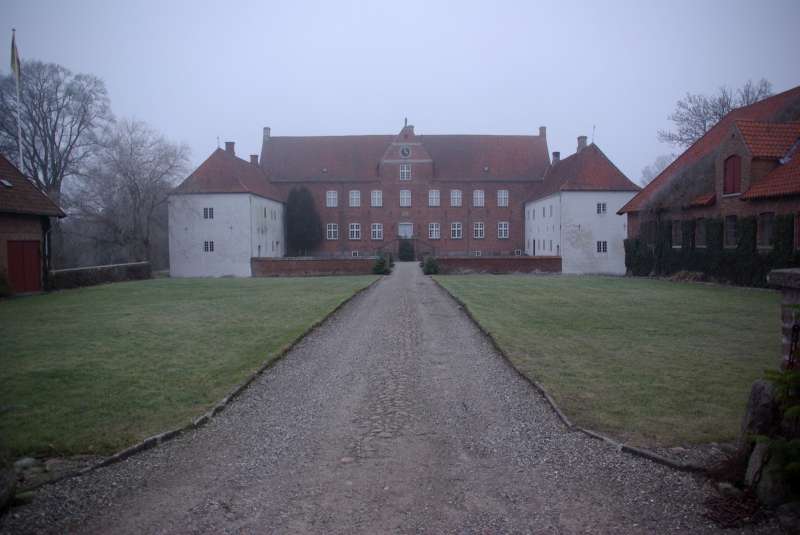|
Saltø
Saltø is a manor house and estate located west of Næstved in southeastern Denmark. The estate was acquired by Carl Adolph von Plessen in 1725 and had been owned by the von Plessen family since then. The main building from the second half of the 16th century and two half-timbered buildings from the second half of the 18th century were listed on the Danish registry of protected buildings and places in 1918. The estate covers . History The first known owner of Saltø was Jacob Fleb. After his death in 1351, his children sold it to Nicolaus af Jura. In 1353, Nicolaus af Jura's son sold the estate to their relative Herman af Jura. In 1377, Saltø was acquired by Count Ernst af Gleichen. In 1386, he sold Saltø to Margaret I. In 1393, she granted to the Diocese of Toskilde. After the Reformation, in 1536, it was confiscated by the crown along with all other church property. It was then administrated as a royal fief. In 1646, Christian IV ceded it to his son by Kirsten Munk, Valdema ... [...More Info...] [...Related Items...] OR: [Wikipedia] [Google] [Baidu] |
Listed Buildings In Næstved Municipality
This is a list of listed buildings in Næstved Municipality, Denmark. The list 4160 Herlufmagle Glumsø, 4171 Glumsø 4250 Fuglebjerg 4262 Sandved 4684 Holmegaard Næstved, 4700 Næstved Tappernøje, 4733 Tappernøje Karrebæksminde, 4736 Karrebæksminde References External links Danish Agency of Culture {{DEFAULTSORT:Listed buildings in Nastved Municipality Listed buildings and structures in Næstved Municipality, Lists of listed buildings in Denmark, Næstved ... [...More Info...] [...Related Items...] OR: [Wikipedia] [Google] [Baidu] |
Carl Adolph Von Plessen
Carl Adolph von Plessen (18 May 1678 - 30 January 1758) was a Danish statesman and landowner. He played a central role during the early reign of Christian VI but fell out of favour at the court and resigned in 1733. He was a major stakeholder in the Danish Asia Company and the Danish West Indies Company and owned a number of estates in Denmark and the Danish West Indies. Early life and education Carl Adolf von Plessen was born on 18 May 1678 in Mecklenburg, the son of chamberlain and later president of the Treasury Christian Siegfried von Plessen (1646-1723) and Sophia Agnes von Lepel (c. 1650–84). He was the brother of Christian Ludvig von Plessen. He studied at Utrecht University. Political career Plessen accompanied Prince Carl on his grand tour in 1696–99. He later followed the prince back to Denmark where he served first as his '' Hofmeister'' and from 1708as his chief chamberlain (''overkammerherre''). Frederik IV's marriage to Anna Sophie divided the royal family and ... [...More Info...] [...Related Items...] OR: [Wikipedia] [Google] [Baidu] |
Carl Adolf Von Plessen
Carl Adolph von Plessen (18 May 1678 - 30 January 1758) was a Danish statesman and landowner. He played a central role during the early reign of Christian VI but fell out of favour at the court and resigned in 1733. He was a major stakeholder in the Danish Asia Company and the Danish West Indies Company and owned a number of estates in Denmark and the Danish West Indies. Early life and education Carl Adolf von Plessen was born on 18 May 1678 in Mecklenburg, the son of chamberlain and later president of the Treasury Christian Siegfried von Plessen (1646-1723) and Sophia Agnes von Lepel (c. 1650–84). He was the brother of Christian Ludvig von Plessen. He studied at Utrecht University. Political career Plessen accompanied Prince Carl on his grand tour in 1696–99. He later followed the prince back to Denmark where he served first as his '' Hofmeister'' and from 1708as his chief chamberlain (''overkammerherre''). Frederik IV's marriage to Anna Sophie divided the royal family a ... [...More Info...] [...Related Items...] OR: [Wikipedia] [Google] [Baidu] |
Denmark
) , song = ( en, "King Christian stood by the lofty mast") , song_type = National and royal anthem , image_map = EU-Denmark.svg , map_caption = , subdivision_type = Sovereign state , subdivision_name = Danish Realm, Kingdom of Denmark , established_title = History of Denmark#Middle ages, Consolidation , established_date = 8th century , established_title2 = Christianization , established_date2 = 965 , established_title3 = , established_date3 = 5 June 1849 , established_title4 = Faroese home rule , established_date4 = 24 March 1948 , established_title5 = European Economic Community, EEC 1973 enlargement of the European Communities, accession , established_date5 = 1 January 1973 , established_title6 = Greenlandic home rule , established_date6 = 1 May 1979 , official_languages = Danish language, Danish , languages_type = Regional languages , languages_sub = yes , languages = German language, GermanGerman is recognised as a protected minority language in t ... [...More Info...] [...Related Items...] OR: [Wikipedia] [Google] [Baidu] |
Count
Count (feminine: countess) is a historical title of nobility in certain European countries, varying in relative status, generally of middling rank in the hierarchy of nobility. Pine, L. G. ''Titles: How the King Became His Majesty''. New York: Barnes & Noble, 1992. p. 73. . The etymologically related English term "county" denoted the territories associated with the countship. Definition The word ''count'' came into English from the French ''comte'', itself from Latin ''comes''—in its accusative ''comitem''—meaning “companion”, and later “companion of the emperor, delegate of the emperor”. The adjective form of the word is "comital". The British and Irish equivalent is an earl (whose wife is a "countess", for lack of an English term). In the late Roman Empire, the Latin title ''comes'' denoted the high rank of various courtiers and provincial officials, either military or administrative: before Anthemius became emperor in the West in 467, he was a military ''comes ... [...More Info...] [...Related Items...] OR: [Wikipedia] [Google] [Baidu] |
Gunderslevholm
Gunderslevholm is a manor house and estate located 12 km northwest of Næstved in southeastern Denmark. Gunderslevholm has been owned by members of the Neergaard (noble family), de Neergaard family since 1803. The main building is located on high ground just west of the Suså River, Susaa river. It was originally a Baroque architecture, Baroque-style mansion built in 1729 for Carl Adolph von Plessen but was in 1787 adapted to the Neoclassical architecture, Neoclassical style. Gunderslevholm covers 2,020 hectares of land and 276 hectares of lake (2023). History Early history Gunderslevholm was in the Middle Ages located in the village of Gunderslevmagle, The manor was in the beginning of the 14th century owned by Niels Pedersen who passed it on to his sons Peder Nielsen and Jens Nielsen. Jens Nielsen sold it to Johannes Mogensen Grubbe, a judge of Zealand, in 1333. Grubbe constructed a fortified house on the estate, but it was destroyed by king Valdemar IV of Denmark, Valdemar IV's ... [...More Info...] [...Related Items...] OR: [Wikipedia] [Google] [Baidu] |


